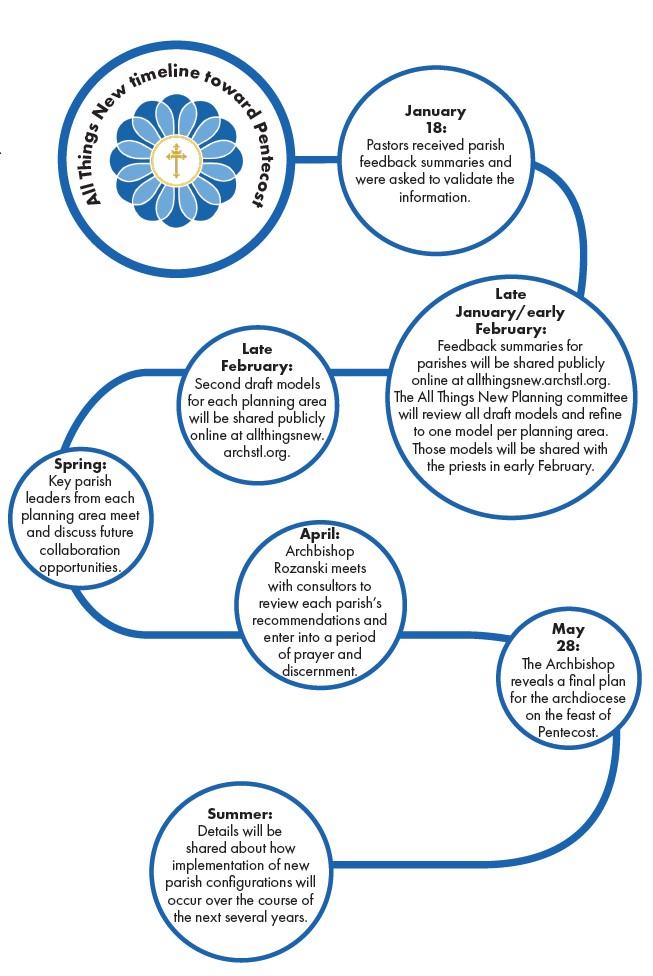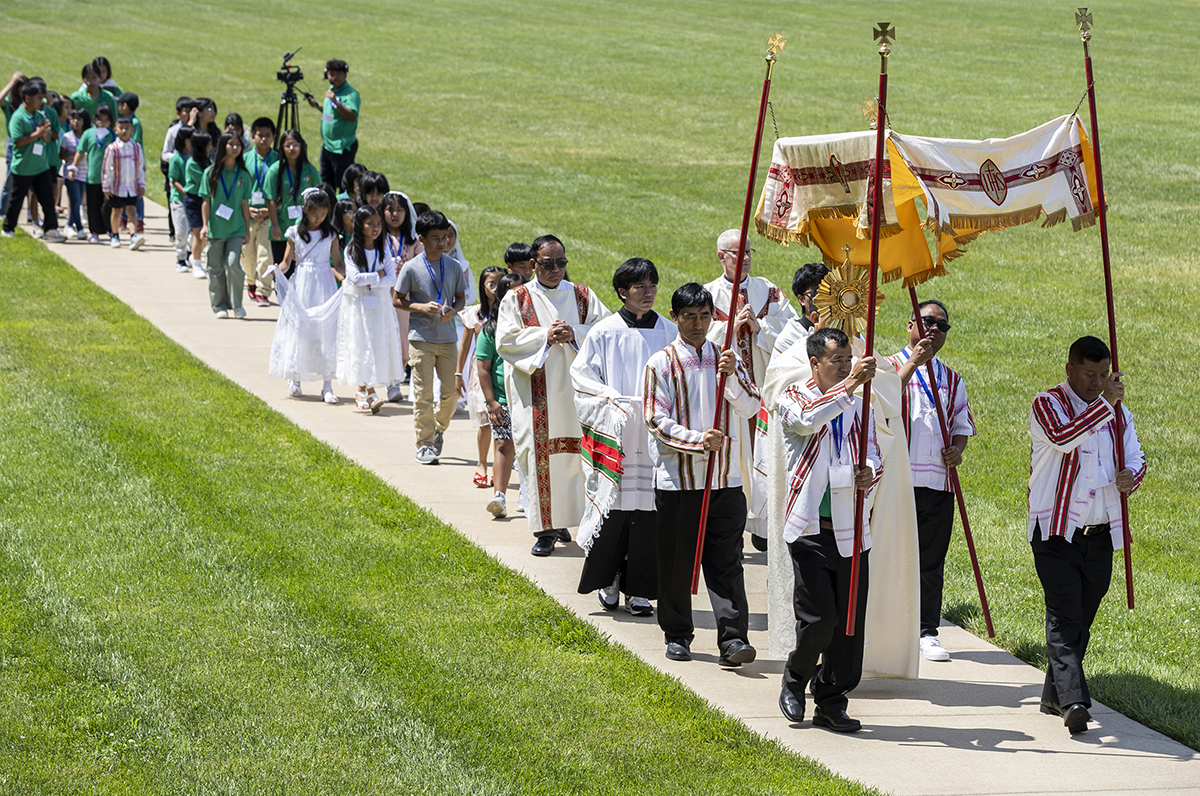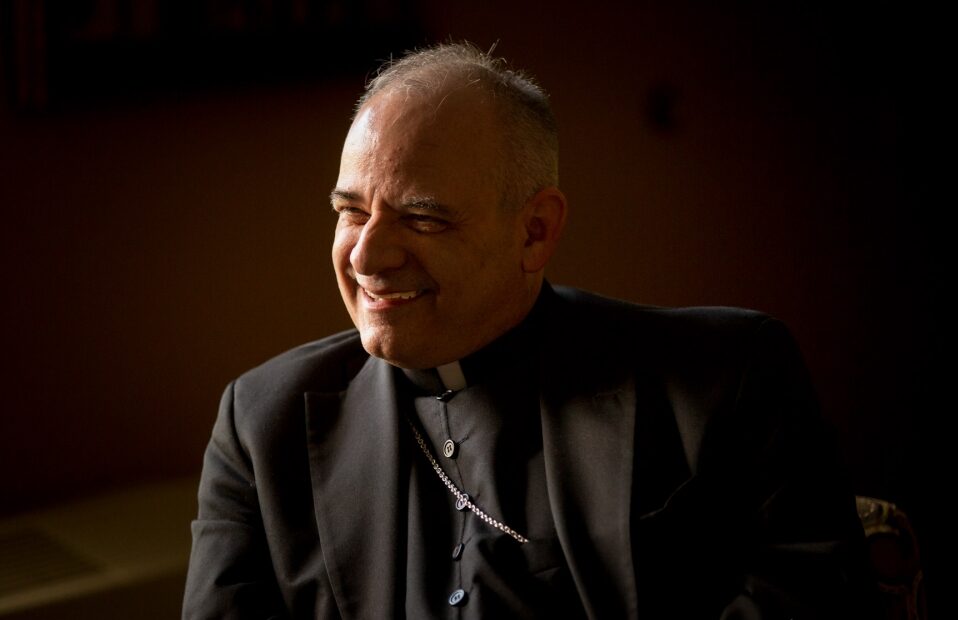Published parish summaries are another piece of information for All Things New decision-making
Summaries include feedback from surveys, listening sessions, individual comments

Pastors across the Archdiocese of St. Louis received feedback summaries for their parishes as part of the All Things New strategic pastoral planning process.
Feedback summaries were prepared for nearly all 178 parishes, which include feedback from key parish leaders, parish listening sessions, online surveys, individual letters and emails. (Some personal parishes did not participate in listening sessions, and as a result will not have feedback summaries.)
After pastors reviewed the parish summaries, they were posted online at allthingsnew.archstl.org on Jan. 27. The summaries will be another important piece of information as Archbishop Mitchell T. Rozanski makes a final decision on the future of the parishes on Pentecost, May 28.
The summaries “show that we are sincerely listening to people through all of the different ways we have received feedback,” said Father Chris Martin, vicar for strategic planning. “All of this is geared toward the archbishop making a well-informed, discerned decision for the spiritual well-being of the archdiocese, looking at the feedback of the people and the needs of the archdiocese.”
A team of nearly 50 volunteers, including religious orders, Kenrick-Glennon Seminary faculty and staff, associate pastors, permanent deacons and lay people helped synthesize the information for each parish summary. Volunteers were not

allowed to synthesize any information for parishes in their own planning area.
They also were asked to follow four guidelines: that they offer a fair representation of what people said; include the real contradictions and tensions reflected in the feedback; offer the good ideas and key insights shared; and ensure that they are concise.
Toward the end of January, the All Things New planning committee is expected to refine the draft models to one model per planning area. Armed with the feedback summaries, parish workbooks and financial data, the team will analyze each model to ensure each one has the resources to sustain the new structure.
The question to be answered, said Father Martin, is: “Ideally, do they have the resources to invest in a more vibrant parish staff and ministries than what they currently have?”
Another round of draft model options will be shared with the priests in early February, with a period of feedback and the final proposed plan expected after that. Other factors will come under consideration, including redrawing maps of parish boundaries and priest reassignments.
Father Martin said it is expected that by the end of April, Archbishop Rozanski will have met with consultors to review final draft models, and then he will have a month to pray and discern before announcing a final decision on May 28, the feast of Pentecost.
Implementation of these plans will take effect beginning in fall 2023 through 2026.
Pastors across the Archdiocese of St. Louis received feedback summaries for their parishes as part of the All Things New strategic pastoral planning process. Feedback summaries were prepared for nearly … Published parish summaries are another piece of information for All Things New decision-making
Subscribe to Read All St. Louis Review Stories
All readers receive 5 stories to read free per month. After that, readers will need to be logged in.
If you are currently receive the St. Louis Review at your home or office, please send your name and address (and subscriber id if you know it) to subscriptions@stlouisreview.com to get your login information.
If you are not currently a subscriber to the St. Louis Review, please contact subscriptions@stlouisreview.com for information on how to subscribe.







